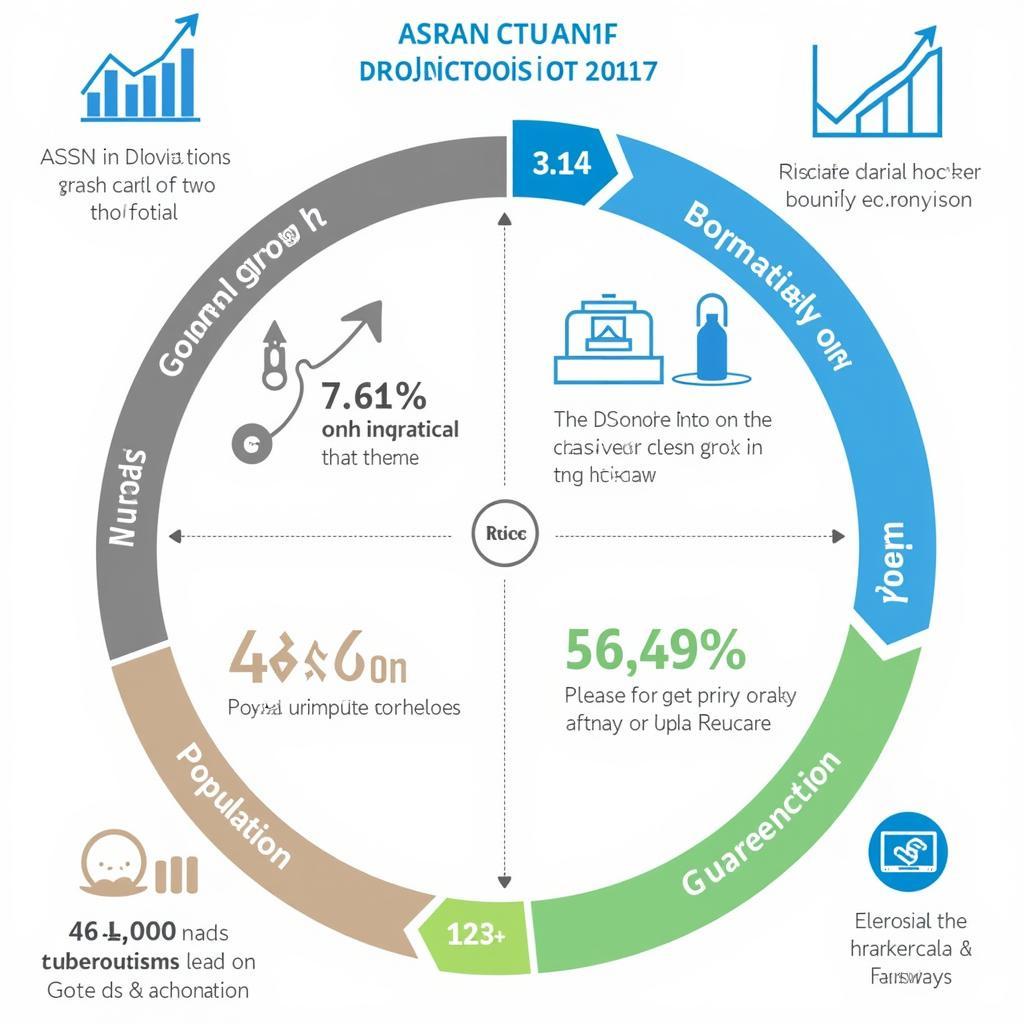What’s ASEAN? It’s a question many ask, and for good reason. The Association of Southeast Asian Nations (ASEAN) is a dynamic intergovernmental organization playing an increasingly vital role on the world stage. This article will delve deep into the heart of ASEAN, exploring its history, purpose, member states, achievements, and future prospects.
Understanding the Foundation: What is ASEAN’s Purpose?
ASEAN was established on August 8, 1967, with the signing of the Bangkok Declaration by five founding members: Indonesia, Malaysia, the Philippines, Singapore, and Thailand. Driven by a shared desire for peace, stability, and prosperity, these nations laid the groundwork for what would become a significant force in regional cooperation. The primary goals of ASEAN are to accelerate economic growth, social progress, and cultural development, promote regional peace and stability, and enhance collaboration among member states.
The organization has since expanded to include Brunei Darussalam, Vietnam, Laos, Myanmar, and Cambodia, bringing the total membership to ten. This diverse group of nations represents a wide range of cultures, languages, and political systems, united by their commitment to common goals.
 Map of ASEAN Member States
Map of ASEAN Member States
ASEAN’s core principles, enshrined in the Treaty of Amity and Cooperation in Southeast Asia (TAC), emphasize mutual respect for sovereignty, non-interference in internal affairs, peaceful settlement of disputes, and renunciation of the threat or use of force. These principles have been instrumental in maintaining peace and stability in the region, fostering an environment conducive to economic growth and social development.
Delving into ASEAN’s Structure and Functions
ASEAN operates through a complex network of institutions, including the ASEAN Summit, the ASEAN Coordinating Council, the ASEAN Community Councils, the ASEAN Sectoral Ministerial Bodies, and the ASEAN Secretariat. These bodies work together to coordinate policies, implement programs, and address regional challenges.
ASE Test Coupon Code 2015 provides insights into accessing valuable resources related to ASEAN.
What are the three pillars of ASEAN?
ASEAN is built on three pillars: the Political-Security Community, the Economic Community, and the Socio-Cultural Community. These pillars represent the organization’s comprehensive approach to regional integration, addressing not only economic issues but also political, security, social, and cultural aspects.
- Political-Security Community: Aims to create a peaceful and stable region through dialogue, confidence-building measures, and conflict resolution mechanisms.
- Economic Community: Seeks to establish a single market and production base, promoting free flow of goods, services, investment, and skilled labor. ASE advertising provides a glimpse into marketing within the ASEAN region.
- Socio-Cultural Community: Focuses on fostering a sense of community and shared identity among ASEAN peoples through education, cultural exchange, and social development initiatives.
ASEAN’s Achievements and Challenges
ASEAN has achieved notable successes in promoting regional cooperation, including the establishment of the ASEAN Free Trade Area (AFTA), the ASEAN Economic Community (AEC), and the ASEAN Regional Forum (ARF). These initiatives have facilitated trade, investment, and dialogue, contributing to economic growth and stability. However, ASEAN also faces significant challenges, such as territorial disputes, political instability, and economic disparities among member states. Navigating these challenges requires continued dialogue, cooperation, and a commitment to ASEAN’s founding principles.
What Does the Future Hold for ASEAN?
Despite the challenges, ASEAN’s future remains bright. The region’s dynamic economies, growing population, and strategic location make it a key player in the global landscape. ASEAN is increasingly engaging with other regional and international organizations, playing a more prominent role in shaping global governance. ASEAN by GDP offers data-driven insights into the economic performance of individual ASEAN countries. The organization’s ongoing efforts to deepen integration and address regional challenges promise a future of continued growth and prosperity for the people of Southeast Asia. For those interested in the digital landscape, ASE number of user connections provides relevant statistics. Managing virtual presence in the region is made easier with services like ASEA virtual office maintenance.
Conclusion: ASEAN’s Continued Importance
What’s ASEAN? It’s a vibrant community of nations working together to build a better future for their people. Through regional cooperation and a shared commitment to peace, stability, and prosperity, ASEAN is shaping the future of Southeast Asia and playing an increasingly important role in the global arena.
FAQ
- What does ASEAN stand for? ASEAN stands for the Association of Southeast Asian Nations.
- How many countries are in ASEAN? There are ten member states in ASEAN.
- When was ASEAN founded? ASEAN was founded on August 8, 1967.
- What are the main goals of ASEAN? The main goals are economic growth, social progress, cultural development, regional peace, and stability.
- What are the three pillars of ASEAN? The three pillars are the Political-Security Community, the Economic Community, and the Socio-Cultural Community.
- What is the ASEAN Free Trade Area (AFTA)? AFTA is an agreement among ASEAN members to reduce tariffs and promote free trade within the region.
- What is the ASEAN Economic Community (AEC)? The AEC aims to create a single market and production base for ASEAN.
 ASEAN Future Projections
ASEAN Future Projections
Need support? Contact us at Phone Number: 0369020373, Email: [email protected] or visit our address: Thon Ngoc Lien, Hiep Hoa, Bac Giang, Vietnam. We have a 24/7 customer service team.

